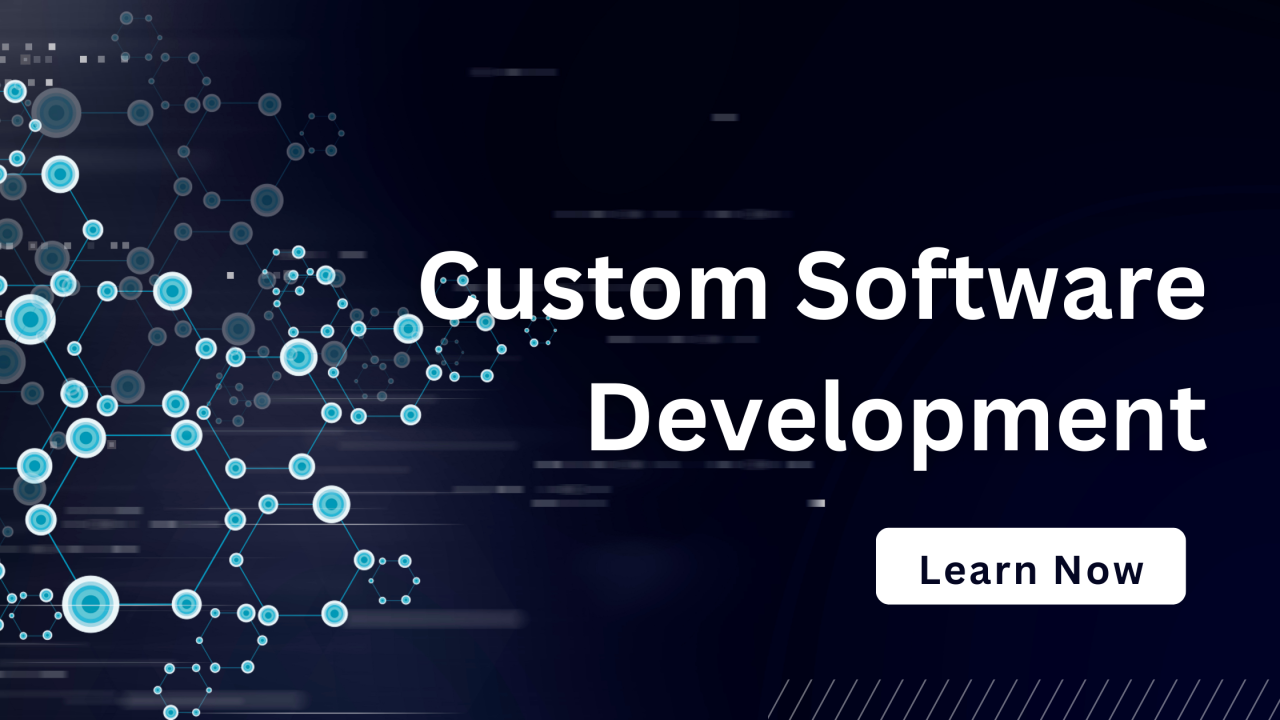Unlocking Business Potential is not just a catchphrase; it’s a call to action for businesses seeking growth and innovation. In an ever-evolving marketplace, the ability to harness unique strengths and foster a culture of creativity can set organizations apart. This exploration delves into innovative strategies that enhance performance, tools and technologies that drive expansion, and methods for building high-performing teams, all while emphasizing the importance of measurable outcomes.
With a focus on actionable insights, we will uncover how businesses can better identify their strengths and leverage them effectively. The discussion will also highlight emerging technologies and essential tools that are reshaping traditional business models, providing a roadmap for companies ready to embark on their growth journey.
Strategies for Unlocking Business Potential

In today’s competitive landscape, unlocking business potential requires a multifaceted approach that leverages innovation, identifies unique strengths, and fosters a culture that encourages creativity. Businesses must continuously assess and adapt their strategies to not only survive but thrive in their respective markets.Innovative strategies are essential for enhancing overall business performance by streamlining processes, improving customer engagement, and driving revenue growth.
Companies that successfully implement these strategies often outperform their competitors and gain a significant advantage in their industries.
Client portals are becoming essential for businesses, allowing seamless communication and data sharing with clients. By leveraging Client Portals via RMM , companies can enhance client relationships while improving efficiency through organized access to necessary resources.
Innovative Strategies for Enhancing Business Performance
To elevate business performance, organizations should focus on implementing innovative strategies that can set them apart from competitors. Key areas of focus include:
- Technology Integration: Leveraging the latest technologies can significantly enhance operational efficiency. For instance, companies can use artificial intelligence (AI) to automate routine tasks, analyze customer data, and predict market trends, ultimately leading to informed decision-making.
- Agile Methodologies: Adopting agile frameworks allows businesses to adapt to changing market conditions quickly. By breaking projects into smaller, manageable tasks and facilitating regular feedback loops, companies can enhance productivity and responsiveness.
- Data-Driven Decision Making: Utilizing data analytics enables businesses to identify trends and customer preferences. This insight allows for targeted marketing strategies and product development that align with market demands.
Identifying and Leveraging Unique Business Strengths
Recognizing and capitalizing on unique strengths is crucial for a business’s competitive edge. This process involves conducting a thorough assessment of both internal capabilities and external market conditions. Effective methods include:
- SWOT Analysis: Conducting a SWOT analysis helps businesses identify their strengths, weaknesses, opportunities, and threats. This comprehensive overview enables organizations to focus on their core competencies while addressing areas for improvement.
- Employee Feedback: Engaging employees in discussions about their perceptions of the company’s strengths can uncover valuable insights. Team members often have a unique perspective on what sets the organization apart.
- Market Research: Understanding market demands and customer expectations allows businesses to tailor their offerings accordingly. By aligning their strengths with market opportunities, organizations can enhance their relevance and appeal.
Fostering a Culture of Innovation
Creating an environment that nurtures innovation is pivotal for long-term success. Best practices for fostering such a culture include:
- Encouraging Open Communication: A transparent communication structure allows for the free exchange of ideas. When employees feel safe sharing their thoughts, creativity flourishes.
- Investing in Training: Providing continuous learning opportunities equips employees with the skills needed to innovate. Workshops, seminars, and online courses can enhance their knowledge and expertise.
- Recognizing Contributions: Acknowledging and rewarding innovative ideas encourages employees to think outside the box. Recognition fosters motivation and can lead to further creative contributions.
“Innovation distinguishes between a leader and a follower.” – Steve Jobs
To ensure optimal performance, businesses must prioritize their server infrastructure. Utilizing RMM for Server Monitoring can significantly enhance server reliability, enabling proactive maintenance and swift response to potential issues, thereby safeguarding critical operations.
Tools and Technologies for Business Growth

In the rapidly evolving business landscape, organizations must leverage the right tools and technologies to drive growth and maintain a competitive edge. These resources not only streamline operations but also facilitate innovative strategies that can transform business models and enhance productivity. This section provides insights into essential tools and emerging technologies that can significantly contribute to business expansion.
Essential Tools for Business Expansion
Investing in the right tools is crucial for businesses aiming for sustainable growth. These tools can automate processes, improve communication, and enhance overall efficiency. Below are key categories of tools that are fundamental for business development:
- Customer Relationship Management (CRM) Software: Tools like Salesforce and HubSpot help businesses manage customer interactions, streamline sales processes, and analyze customer data to enhance relationships and boost sales.
- Project Management Platforms: Applications such as Asana and Trello enable teams to organize tasks, set deadlines, and monitor progress, fostering collaboration and efficiency across projects.
- Accounting Software: Solutions like QuickBooks and Xero provide businesses with essential tools for managing finances, invoicing, and financial reporting, ensuring accurate tracking of expenses and revenues.
- Marketing Automation Tools: Platforms like Mailchimp and Marketo allow businesses to automate marketing campaigns, segment audiences, and measure the effectiveness of marketing strategies, enhancing outreach and engagement.
Emerging Technologies Transforming Business Models
The integration of emerging technologies into business operations has the potential to disrupt traditional business models and enhance value propositions. These technologies are reshaping the way companies operate and interact with customers. Key technologies include:
- Artificial Intelligence (AI): AI is revolutionizing decision-making processes by providing data-driven insights, automating routine tasks, and enhancing customer service through chatbots and personalized recommendations.
- Blockchain Technology: This technology offers businesses a secure and transparent way to conduct transactions and manage supply chains, reducing fraud and increasing trust among stakeholders.
- Cloud Computing: By utilizing cloud services, organizations can scale operations, improve data storage and accessibility, and enhance collaboration among remote teams, leading to operational efficiency.
- Internet of Things (IoT): IoT devices enable real-time data collection and monitoring, allowing businesses to optimize processes, enhance customer experiences, and streamline inventory management.
Comparison of Software Solutions for Productivity and Efficiency
Choosing the right software solutions is essential for optimizing productivity and improving operational efficiency. Below is a comparative overview of popular software solutions that cater to various business needs:
| Software | Category | Key Features | Best For |
|---|---|---|---|
| Salesforce | CRM | Lead management, analytics, automation | Sales teams looking to boost client relationships |
| Asana | Project Management | Task assignments, deadline tracking, integrations | Teams managing complex projects |
| QuickBooks | Accounting | Invoicing, expense tracking, financial reporting | Small to medium-sized businesses |
| Mailchimp | Marketing Automation | Email campaigns, audience segmentation, performance analytics | Businesses focused on digital marketing |
“The right tools and technologies not only enhance productivity but also empower businesses to navigate complexities and adapt to market changes.”
Building Effective Teams for Success
In today’s fast-paced business environment, the ability to build effective teams is crucial for organizational success. High-performing teams not only drive productivity but also foster innovation and adaptability. This section delves into the characteristics that define high-performing teams, the significance of diverse skill sets, and the essential communication practices that can enhance collaboration among team members.
Characteristics of High-Performing Teams
High-performing teams exhibit distinct traits that enable them to thrive in competitive landscapes. These characteristics include trust, accountability, and a shared vision among team members. Trust is the foundation of any successful team, allowing members to communicate openly and take risks without fear of judgment. Accountability ensures that each member takes responsibility for their contributions, fostering a culture of reliability and performance.
A shared vision aligns the team’s efforts toward common goals, enhancing motivation and focus.
Diversity in Skill Sets and Perspectives
The inclusion of diverse skill sets and perspectives is vital for enriching team dynamics. Diverse teams are better equipped to approach problems from various angles, leading to innovative solutions and creative problem-solving. A combination of technical expertise, industry knowledge, and soft skills such as emotional intelligence creates a well-rounded team capable of tackling complex challenges. Additionally, teams that embrace diversity are more likely to understand and serve a varied customer base, driving better business outcomes.
Effective Communication Practices
Establishing effective communication practices is essential for enhancing collaboration within teams. A framework for communication should include the following components to create a supportive environment:
- Regular Check-Ins: Scheduled meetings allow team members to discuss progress, share feedback, and address any concerns. This practice fosters transparency and keeps everyone informed.
- Open Channels for Feedback: Encouraging constructive feedback helps team members understand each other’s perspectives and fosters continuous improvement within the team.
- Active Listening: Team members should practice active listening techniques to ensure that everyone feels heard and valued in discussions. This can lead to more informed decision-making.
- Utilization of Collaboration Tools: Leveraging technology such as project management software and communication platforms can streamline interactions and facilitate real-time collaboration.
Each of these practices contributes to a cohesive team environment where collaboration flourishes. In a world where agility and responsiveness are paramount, investing time in building effective communication practices pays off significantly.
Measuring and Evaluating Business Performance

Measuring and evaluating business performance is an essential process that allows organizations to assess their growth and potential effectively. Utilizing the right metrics and conducting thorough performance reviews ensures that businesses can navigate towards their goals with precision, making informed decisions and adjustments as necessary.Establishing the correct metrics is vital for assessing the ongoing health of a business. Key performance indicators (KPIs) serve as benchmarks that gauge company performance across various dimensions.
These metrics not only reveal past performance but also predict future success and growth potential.
Key Performance Indicators for Business Growth
The selection of appropriate KPIs is crucial for any business seeking to measure its performance accurately. These indicators should be aligned with the strategic goals of the organization. Here are some essential metrics that every business should track:
- Revenue Growth Rate: Measures the year-over-year increase in revenue, giving insights into the company’s sales performance.
- Customer Acquisition Cost (CAC): This metric reflects the total cost of acquiring a new customer, which is critical for financial sustainability.
- Net Promoter Score (NPS): A measure of customer satisfaction and loyalty, indicating the likelihood of customers recommending your services or products.
- Employee Productivity: This can be measured through outputs per labor hour, an indicator of efficiency and effectiveness across teams.
Each of these KPIs provides a distinct perspective on business performance and should be regularly monitored to identify trends and areas for improvement.
Performance Reviews and Feedback Sessions
Conducting performance reviews and feedback sessions is integral to fostering a culture of continuous improvement. These sessions allow for a structured evaluation of individual and team performances, ensuring alignment with organizational objectives. The process typically involves the following steps:
1. Preparation
Gather relevant data and feedback from various sources, including self-assessments, peer reviews, and manager evaluations.
2. Review Meeting
Schedule a time to discuss the findings with the employee, ensuring a conducive environment for open dialogue.
3. Feedback Delivery
Present the feedback constructively, focusing on both strengths and areas for development. Encourage the employee to share their perspectives.
4. Goal Setting
Collaboratively set specific, measurable, attainable, relevant, and time-bound (SMART) goals for the upcoming review period.The significance of feedback cannot be overstated; it cultivates a transparent atmosphere where employees feel valued and engaged, ultimately driving performance and satisfaction.
Setting Actionable Goals and Tracking Progress, Unlocking Business Potential
Setting actionable goals is fundamental to successful business performance measurement. Goals should be clearly defined and directly tied to the organization’s strategic vision. The following practices can enhance goal-setting effectiveness:
SMART Criteria
Ensure all goals are Specific, Measurable, Achievable, Relevant, and Time-bound, facilitating clear understanding and accountability.
Regular Check-ins
Establish a routine for progress reviews, allowing teams to assess advancements and recalibrate strategies as necessary.
Visual Tracking
Utilize dashboards or project management tools that offer visual representation of progress, making it easier for teams to stay aligned and motivated.Tracking progress is equally as important as goal-setting. Consistent monitoring allows businesses to make data-driven decisions, ensuring they remain on course to meet their objectives. According to a study by the Harvard Business Review, organizations that consistently set and track goals report up to 50% higher performance rates compared to those that do not.Establishing a robust framework for measuring and evaluating business performance not only maximizes growth potential but also nurtures a culture of excellence within the organization.
By emphasizing the importance of precise metrics, thorough performance evaluations, and actionable goal-setting, businesses can significantly enhance their performance trajectory.